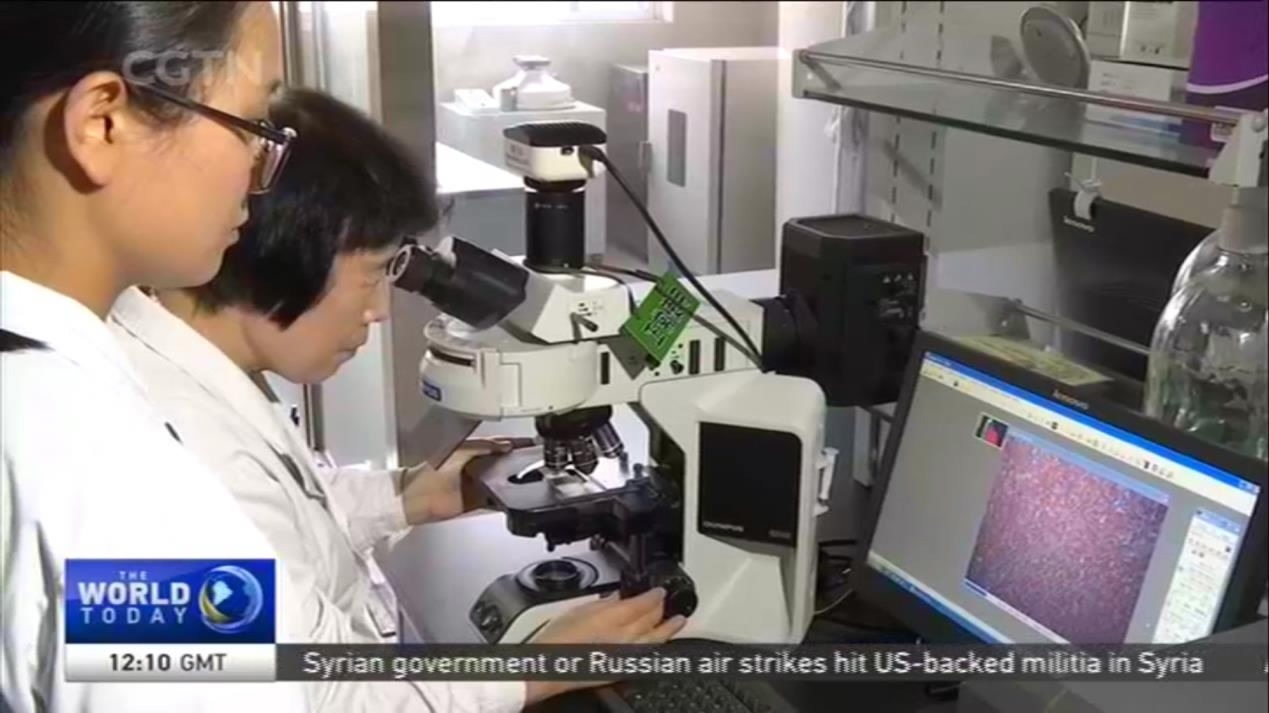
Tech & Sci
11:15, 18-Sep-2017
Combined treatment of TCM and modern medicine effective in treating liver cirrhosis
By CGTN's Luo Yu and Li Jian

Traditional Chinese Medicine (TCM) has been advancing and evolving for thousands of years. Its practitioners are now working alongside modern medical scientists to prevent and treat diseases in China, including hard-to-cure liver cirrhosis.
According to the gastroenterology department of the First Affiliated Hospital of Henan University of TCM in central China’s Henan Province, the rate of treating liver cirrhosis effectively is around 70 percent without applying Chinese herbs and TCM therapies.
However, when TCM and modern medical science are combined, the success rate reaches nearly 90 percent.

A nurse monitors the screen of a medical equipment. /CGTN Photo
A nurse monitors the screen of a medical equipment. /CGTN Photo
"Generally speaking, after two or three years of treatment, the hard lump on the liver can be resolved. And patients previously diagnosed with liver cirrhosis will no longer be detected by ultrasonography," said Dr. Zhao Wenxia, chief physician of the gastroenterology department.
"If we only use western medicine without applying traditional Chinese herbs and other therapies, the infection can be controlled, but many other complications such as spleen enlargement and portal hypertension will continue to exist," Zhao added.
The hospital applies both modern medical science and TCM. For example, liver cirrhosis can be detected by a FibroScan device that evaluates the degree of stiffness of the organ.
Complications such as varicose veins caused by the disease can be treated with endoscopes, and antiviral drugs can help reverse liver fibrosis and even early cirrhosis.

Liver cells are observed under the microscope. /CGTN Photo
Liver cells are observed under the microscope. /CGTN Photo

Varicose veins caused by the disease can be treated with endoscopes. /CGTN Photo
Varicose veins caused by the disease can be treated with endoscopes. /CGTN Photo
In the meantime, TCM plays a pivotal part in curing the disease as well. Acupuncture can relieve pain immediately, while ginger moxibustion (a form of heat therapy) can improve immunity and quality of life. Chinese herbal medicine can significantly decrease pressure in the portal vein and the splenic vein. Even late evening herbal diets have been proven to enhance nutrition in patients and elevate their quality of life.
"I got liver disease nearly three decades ago and it has just developed into liver cirrhosis. The development of the disease is low. Why? I think that's mainly because I use Chinese herbal medicine and other TCM therapies. Apart from antiviral drugs, 80 percent percent of my prescriptions are traditional Chinese medicine," one patient told CGTN.

Ginger moxibustion can improve a patient's immunity and quality of life. /CGTN Photo
Ginger moxibustion can improve a patient's immunity and quality of life. /CGTN Photo
Many medical experts say that TCM and modern medicine have two different theoretical systems, but there are signs the two are converging.
"TCM is macro. It emphasizes treating the whole body. Western medicine is micro and it focuses on molecules, cells and tissues. For example, when a patient develops liver disease, western medicine tends to think of it as one type of disease but TCM treatment is holistic. But now modern medicine and TCM converge in looking at illness," Dr. Zhao added.
More and more scientific evidence shows that both TCM and modern medicine share commonalities at the molecular level and they work pretty well together in areas such as infertility and liver cirrhosis.
It remains to be seen if such a marriage is the future of medical science, but TCM is expected to go much further in its process of modernization as it advances and integrates with modern medical science.
622km

SITEMAP
Copyright © 2018 CGTN. Beijing ICP prepared NO.16065310-3
Copyright © 2018 CGTN. Beijing ICP prepared NO.16065310-3